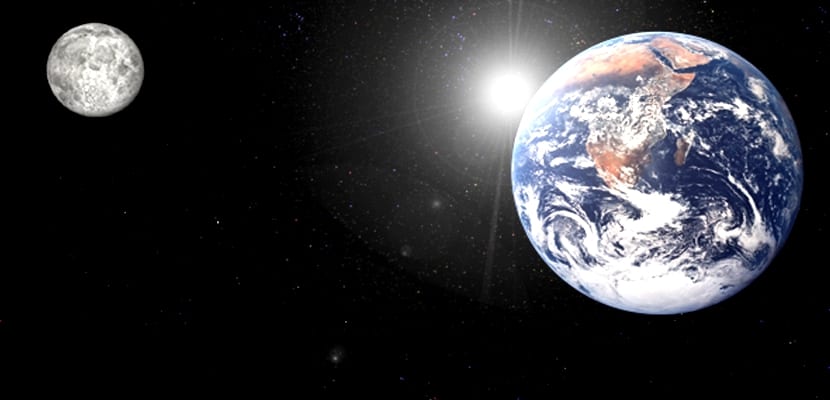
El magnetic field of the Earth protects us every day from charged particles and radiation from solar radiation. This shield is produced by the rapid movements of huge amounts of liquid iron alloy in the outer core of the planet. To keep this field magnetic, the classical model claimed that the Earth's core had cooled approximately 3000 degrees in the last 4,3 billion years. This was without counting the influence of the Moon.
The classical model of magnetic field formation of the Earth it raised a greater paradox. For this geodynamics to work, the earth would have to have completely melted 4000 billion years ago, and its core would have had to slowly cool down to about 6800 degrees. Recent work on modeling the early evolution of the internal temperature of the planet, and geochemistry on the composition of carbonadudes and older basalts go against this cooling. If such high temperatures are excluded, the researchers propose another source of energy in this study.
A team of researchers suggests that the temperature has dropped by just 300 degrees. The action of the La, forgotten until now, would then compensate for this difference to keep the geodynamics active.
La Tland it adopts a flattened shape, revolves around an inclined axis that oscillates around the poles, and its mantle is elastically deformed by the effect of the tide caused by the moon. Researchers have shown that this effect could continuously stimulate the movements of the alloy of iron liquid which constitutes the outer core, and in turn generate the Earth's magnetic field.
This Energy is sufficient to generate the magnetic field of the Earth that with the Moon, solves the major paradox of the classical model. Such an effect of gravitational pits on the magnetic field of a planet has been widely documented through two natural satellites, that of Jupiter and that of many exoplanets.
As neither the rotation of the Earth around its axis, neither the orientation of this axis, nor the orbit of the Moon are perfectly regular, their accumulated influence on the movements in the nucleus is unstable and can make the geodynamics fluctuate. This phenomenon makes it possible to explain certain pulses of heat in the outer core and on its border with the layer of the earth. Historically, this could lead to melting peaks in the deep mantle and eventual major volcanic events on the surface of the Earth. This new model highlights that the influence of La on Earth far exceeds the simple case of tides.